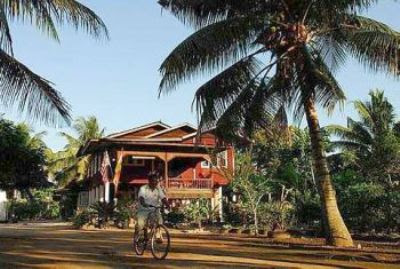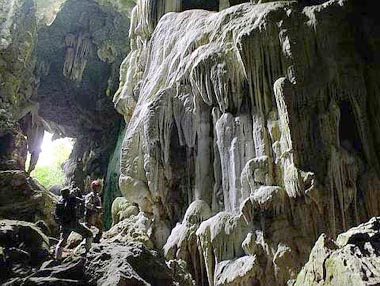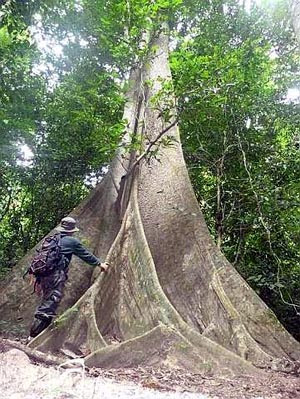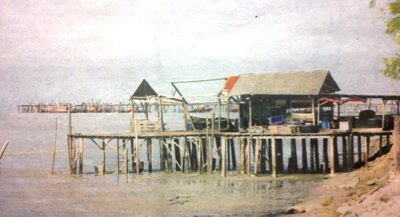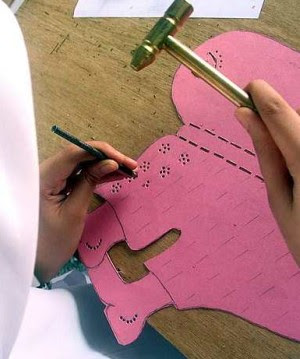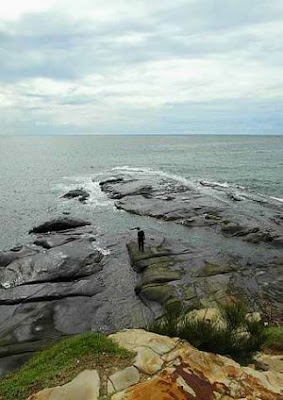Fast, attentive service
By Putri Zanina
It’s two different worlds inside and outside Cititel Penang, writes Putri Zanina
IT’S just a few steps away from the busy stretch of Penang Road where sidewalk hawkers sell food and newspapers, and honking vehicles fight pedestrians for space. But it’s a different world inside Cititel Penang.
With gleaming tiled floors in the cool, spacious lobby and a passage lined with a convenience store, café and restaurants for in-house dining, there is much distinguishing this hotel from other cramped and old-looking properties along George Town’s most famous road.
Expect deluxe accommodation and fast, attentive service. The deluxe superior room on the 16th floor is elegant and uncluttered, with a writing cum dressing table, comfy king-sized bed, mini bar, flat screen TV, closet and lounge chairs all cleverly arranged even in some tight corners, giving a sense of chic sensibility.
Even the small bathroom is a perfectly economical use of space. It has a shower stall that’s big enough for two, a long bath and vanity with mirror and sink.
It’s the room colour scheme that truly enchants. Everything matches — from the crispy white bedspread, creamy-white walls to pale yellow curtains and dark brown floor and furniture. The soft lighting that glows along the baseboard lends a zen-like feel.
And the view? On one side is the panoramic view of the north and south sea channels, including the iconic Penang Bridge. And on the other — the concrete jungle that’s a blend of the new and old architecture, including that within the enclave declared as Unesco world heritage sites.
Now, that’s another plus point of the hotel — its location within the perimeter of the heritage enclave.
Just a few minutes’ walk or a ride on a trishaw and you’d enter a time warp that reeks of an era of a charming hybrid of Chinese, Peranakan, Malay, Indian and western culture as well as an ambience of laissez-faire that dates back centuries.
Return to the hotel and you’d be immediately transported to a world of modern conveniences where you’d also want to linger and enjoy its cooling and
calming embrace.
FAST FACTS
HOTEL:
Cititel Penang
66, Jalan Penang, 10000 Penang
Tel: 04-370 1188 Fax: 04-370 2288
Email: resvn@cititelpenang.com
Website: www.cititelpenang.com
GETTING THERE:
The hotel is located within
upper Penang Road in the heart of Unesco-certified heritage enclave of George Town. You can approach the area from Jalan Farquhar, Jalan Lebuh Light or Lebuh Chulia, all about 10 minutes’ away from Penang ferry jetty.
MAIN ATTRACTIONS:
Its location in the main thoroughfare of George Town, heritage areas in its surroundings and some of Penang’s best eating, shopping and tourist spots.
FIRST IMPRESSION:
Spacious, airy lobby and busy, busy city hotel.
RATING:
Four-star.
ROOMS:
451 rooms from Standard, Superior to Studio and Executive Suite. Superior rooms have recently been spruced up with warm colours and better amenities.
RATES:
Current promotional rate of RM215 nett per room per night in Superior Room includes a breakfast while RM245 nett per room per night throws in breakfast for two in a twin-sharing room. Upgrade to the Pinnacle Room (Executive Floor) costs RM260 nett per person per night to enjoy extra privileges, including the use of the exclusive Pinnacle Lounge with free drinks and snacks at specified hours and free Internet access.
F&B OUTLETS:
Twenty-four-hour Main Street Café for local and international food, Zhonghua Gourmet Restaurant for Chinese food including dim sum, Kirishima Japanese Restaurant and Pinnacle Lounge for Executive Floor guests only.
FACILITIES:
These include wireless Internet access, business centre, jacuzzi pool, health centre with gymnasium, function rooms and pillarless ballroom for up to 500 persons.
OVERALL SERVICE:
Fast and efficient with friendly smiles.
PLACES WITHIN WALKING DISTANCE:
All kinds of eateries including hawker stalls offering famous Penang food. All other Penang Road attractions like bazaars, markets and shopping malls.
Many heritage-listed buildings are within walking distance too, such as Cheong Fatt Tze Mansion, Kapitan Kling Mosque, Goddess of Mercy Temple and Khoo Kongsi. Love Lane, Stewart Lane and other nooks and crannies within the heritage sites are fascinating to discover on foot, and the hotel makes a good point to start your walk.
Cititel Penang -- NST
By Putri Zanina
It’s two different worlds inside and outside Cititel Penang, writes Putri Zanina
IT’S just a few steps away from the busy stretch of Penang Road where sidewalk hawkers sell food and newspapers, and honking vehicles fight pedestrians for space. But it’s a different world inside Cititel Penang.
With gleaming tiled floors in the cool, spacious lobby and a passage lined with a convenience store, café and restaurants for in-house dining, there is much distinguishing this hotel from other cramped and old-looking properties along George Town’s most famous road.
Expect deluxe accommodation and fast, attentive service. The deluxe superior room on the 16th floor is elegant and uncluttered, with a writing cum dressing table, comfy king-sized bed, mini bar, flat screen TV, closet and lounge chairs all cleverly arranged even in some tight corners, giving a sense of chic sensibility.
Even the small bathroom is a perfectly economical use of space. It has a shower stall that’s big enough for two, a long bath and vanity with mirror and sink.
It’s the room colour scheme that truly enchants. Everything matches — from the crispy white bedspread, creamy-white walls to pale yellow curtains and dark brown floor and furniture. The soft lighting that glows along the baseboard lends a zen-like feel.
And the view? On one side is the panoramic view of the north and south sea channels, including the iconic Penang Bridge. And on the other — the concrete jungle that’s a blend of the new and old architecture, including that within the enclave declared as Unesco world heritage sites.
Now, that’s another plus point of the hotel — its location within the perimeter of the heritage enclave.
Just a few minutes’ walk or a ride on a trishaw and you’d enter a time warp that reeks of an era of a charming hybrid of Chinese, Peranakan, Malay, Indian and western culture as well as an ambience of laissez-faire that dates back centuries.
Return to the hotel and you’d be immediately transported to a world of modern conveniences where you’d also want to linger and enjoy its cooling and
calming embrace.
FAST FACTS
HOTEL:
Cititel Penang
66, Jalan Penang, 10000 Penang
Tel: 04-370 1188 Fax: 04-370 2288
Email: resvn@cititelpenang.com
Website: www.cititelpenang.com
GETTING THERE:
The hotel is located within
upper Penang Road in the heart of Unesco-certified heritage enclave of George Town. You can approach the area from Jalan Farquhar, Jalan Lebuh Light or Lebuh Chulia, all about 10 minutes’ away from Penang ferry jetty.
MAIN ATTRACTIONS:
Its location in the main thoroughfare of George Town, heritage areas in its surroundings and some of Penang’s best eating, shopping and tourist spots.
FIRST IMPRESSION:
Spacious, airy lobby and busy, busy city hotel.
RATING:
Four-star.
ROOMS:
451 rooms from Standard, Superior to Studio and Executive Suite. Superior rooms have recently been spruced up with warm colours and better amenities.
RATES:
Current promotional rate of RM215 nett per room per night in Superior Room includes a breakfast while RM245 nett per room per night throws in breakfast for two in a twin-sharing room. Upgrade to the Pinnacle Room (Executive Floor) costs RM260 nett per person per night to enjoy extra privileges, including the use of the exclusive Pinnacle Lounge with free drinks and snacks at specified hours and free Internet access.
F&B OUTLETS:
Twenty-four-hour Main Street Café for local and international food, Zhonghua Gourmet Restaurant for Chinese food including dim sum, Kirishima Japanese Restaurant and Pinnacle Lounge for Executive Floor guests only.
FACILITIES:
These include wireless Internet access, business centre, jacuzzi pool, health centre with gymnasium, function rooms and pillarless ballroom for up to 500 persons.
OVERALL SERVICE:
Fast and efficient with friendly smiles.
PLACES WITHIN WALKING DISTANCE:
All kinds of eateries including hawker stalls offering famous Penang food. All other Penang Road attractions like bazaars, markets and shopping malls.
Many heritage-listed buildings are within walking distance too, such as Cheong Fatt Tze Mansion, Kapitan Kling Mosque, Goddess of Mercy Temple and Khoo Kongsi. Love Lane, Stewart Lane and other nooks and crannies within the heritage sites are fascinating to discover on foot, and the hotel makes a good point to start your walk.
Cititel Penang -- NST

